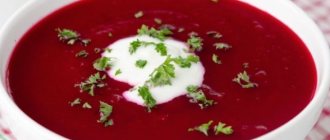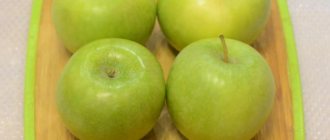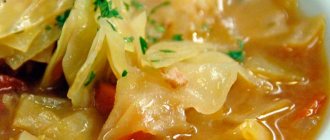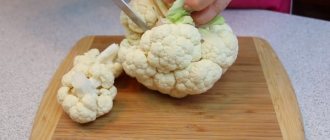Pediatricians recommend starting vegetable complementary foods with cauliflower. What properties allowed this culture to take such an honorable first place?
Photo: depositphotos.com. Author: bit245.
The traditions of introducing complementary foods are different everywhere. In the CIS countries, vegetables, milk porridges and fermented milk products are competing for the top spot.
But the choice should be based not only on the mother’s opinion, but also on the baby’s health status:
- For bloating and diarrhea, complementary feeding begins with cereals.
- For intestinal colic and constipation, or exceeding the age norm for body weight, choose vegetables.
You need to start with what is grown in your region.
Give preference to white or green vegetables: they contain non-coarse, easily digestible fiber.
Choose hypoallergenic crops, even if the little one is not prone to allergies - it will be easier for the immature digestive tract to cope with them.
If the first vegetable complementary food is started correctly, the child will not face any unpleasant consequences. In the future, this will help the baby adapt to any solid food: from zucchini puree to meat.
Benefits of cauliflower puree
The benefits of vegetables are invaluable. Most often, a baby's first food at six months is zucchini or cauliflower puree due to the fact that they practically do not cause allergies.
Positive properties of the vegetable:
- Improves digestion, eliminating constipation and high gas formation in the intestines;
- Contains a lot of iron, so children with low hemoglobin will be very useful in their diet;
- The functioning of the liver, gall bladder and heart improves;
- Beneficial effect on the nervous system;
- Metabolism accelerates;
- The skeletal system and blood vessels are strengthened;
- Anticancer effect;
- “Warm” product, which is very helpful in winter, when the body requires products with a warming effect;
- Thanks to vitamin U, the acidity of gastric juice comes into balance.
Important! The product will only be beneficial if the dish is used in moderation. Therefore, the mother should know how many grams can be given to the child.
Composition and nutritional value
Cauliflower contains:
- water;
- dietary fiber and fiber;
- carbohydrates and monosaccharides;
- pectins;
- various vitamins (A, B, C, U, PP, E, K). Vitamin C is twice as much as in lemon;
- micro, - and macroelements;
- amino acids – methionine, tryptophan, lysine.
Note! The calorie content of the vegetable is 25 calories per 100 grams. Therefore, pediatricians recommend cauliflower for children who are overweight.
The benefits and harms of vegetables
Cauliflower as a complementary food is not an allergen for a child, which is why it is one of the first to be introduced into the diet.
Benefits of cauliflower for a baby:
- has a laxative effect, normalizes stool, soothes colic;
- contains cobalt, phosphorus, iron, magnesium and other essential trace elements;
- there is vegetable protein that activates the work of the liver and gall bladder;
- reduces blood sugar levels.
In addition, the product contains citric, folic and malic acids, which strengthen the walls of blood vessels and the heart.
However, cauliflower for children also has its disadvantages:
- in large quantities causes increased acidity of gastric juice;
- Possible bloating and flatulence.
In exceptional cases, an allergy to cauliflower may occur, which is accompanied by a rash, redness, and upset stool.
Cauliflower selection
Corn porridge for babies - benefits and harms, how to cook, recipe
Fresh and high-quality vegetables should be chosen correctly:
- Cabbage should be white, without black spots;
- The leaves are bright, green, tightly adjacent to one another;
- The head of cabbage is quite elastic;
- The inflorescences are dense.

Overripe cabbage
If the puree is store-bought:
- You need to choose glass jars;
- The label indicates the age for which this composition is intended;
- It is worth studying the expiration date and how to store the product;
- No dyes or preservatives in the composition.
Additional Information. You can freeze cabbage. Simply wash the inflorescences and place them in salted, cool water for 15-20 minutes. Then trim the leaves, dry the inflorescences and place them in containers.
When to give to infants
A baby’s first acquaintance with cauliflower occurs at 6 months, when the vegetable is introduced into the child’s diet. She is offered to be one of the first to try the baby. For bottle-fed babies, the product can be introduced a month earlier.
Prune puree for babies - how to introduce it into complementary foods
You should offer your baby puree in the morning - half or a whole teaspoon. If during the day there is no reaction in the child in the form of a rash or loose stools, then the next day the portion is doubled. So you need to gradually increase it to 50 g or more. After a month, you can add a spoonful of vegetable or butter to the puree.
Note! From 8 months, you can not puree vegetables, but offer your baby boiled cabbage in the form of stew or soup.
When is a baby ready for complementary feeding: from what month?
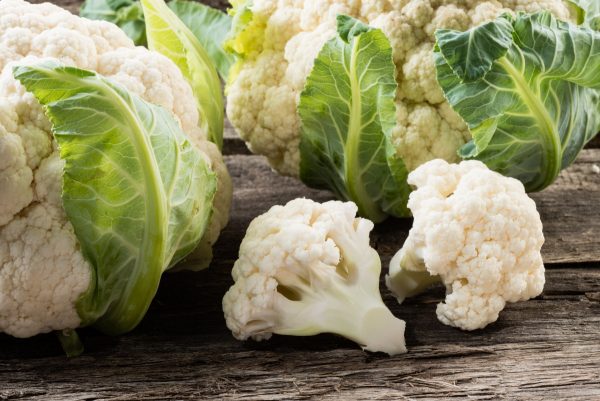
Every mother should know how to properly introduce the first complementary foods. The child has not yet tried anything other than mother's milk or formula, and he needs to adapt to a new diet. By the age of 5-6 months, the baby is ready to try other foods.
Expert opinion
Sokolova L. S.
Pediatrician of the highest category
If the child is breastfed, then complementary feeding can begin at 6-7 months, for bottle-fed babies - at 4-5 months.
You can understand that your baby is ready for complementary feeding by the following signs:
- he does not get enough of milk alone and often asks for food;
- the baby is already sitting with a little support and holding his head;
- when solid food gets into the mouth, it does not push it out;
- The baby is interested in food from the parents' plate.
How to introduce complementary foods correctly
- It is necessary to offer new food to a child during a period when he is completely healthy and has not been or will not be vaccinated.
- It is better to feed in the morning to monitor the baby’s condition throughout the day.
- Start with 5 g (one teaspoon) of puree, and then supplement with breastfeeding or infant formula.
- Over the course of a week, we gradually increase the amount of cabbage to 40-50 g.
- It is necessary to monitor the child during the introduction of new products. You need to especially carefully monitor his stool and general well-being.
- Food for the baby should be fresh. You should not give him yesterday's puree, as this will cause increased gas formation and bowel dysfunction.
- When preparing complementary foods, salt should not be used.
- If no negative reactions are observed, the volume of complementary foods can be increased to 100-200 g, depending on the age of the child.
How to make puree
Vegetable soup for a child - a recipe for a baby
You can make cauliflower puree at home:
- in a slow cooker or double boiler;
- Boil or steam the vegetable in a pan, then blend with a blender with a small amount of water;
- make cream soups or add to purees before beating chicken or turkey fillets (in this form the dish will be more satisfying).
Cooking time
Not every mother knows how to cook fresh or frozen cabbage in order to preserve the nutrients in it. The head of cabbage is first cleared of leaves, then it should be thoroughly washed and divided into inflorescences.
For a child, the vegetable is cooked in a double boiler for 15 minutes. If you don’t have an appliance at home, you can cook cabbage. Place the inflorescences into boiling water and boil over low heat for 7-10 minutes. Then the dish is whipped with a blender.
Important! Frozen cabbage should not be thawed before cooking - it will fall apart.
Recipes
Cauliflower puree for babies, the recipe can be:
- in a saucepan;
- in a slow cooker or double boiler;
- in the oven.
In a saucepan
The inflorescences are washed and can be divided into smaller pieces. Water is poured into the container. Bring it to a boil and add cabbage. Boil for 7-10 minutes, then whisk in a small amount of broth.
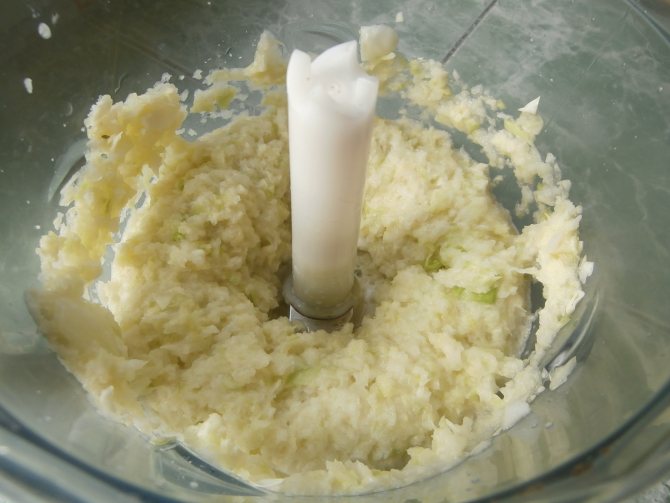
While blending in a blender
In a slow cooker
Step-by-step preparation:
- Rinse the inflorescences;
- Place them in a bowl;
- Set the “Cooking” mode;
- Set the time to 10-15 minutes;
- Afterwards, knead the dish.
In the oven
Cabbage inflorescences are placed in a ceramic bowl and filled with water. Place the container in the oven, which should be preheated to 180 degrees. Cooking time – 15 minutes.
Freezing
Is it possible to freeze cauliflower for the winter; will it lose its beneficial properties? Frozen vegetables for complementary feeding will help mommy out in the winter, when fresh cabbage becomes unavailable.
There are two ways to freeze cauliflower.
- Fresh. For this inflorescence you need to rinse well, dry and put in a vacuum container.
- Blanching. Place the washed cabbage in boiling water for 5 minutes and then in cold water. Dry them on paper towels and then pack them into containers.
How long to cook frozen cabbage? You need to cook vegetables from the freezer for the same amount of time as fresh ones, that is, until they soften.
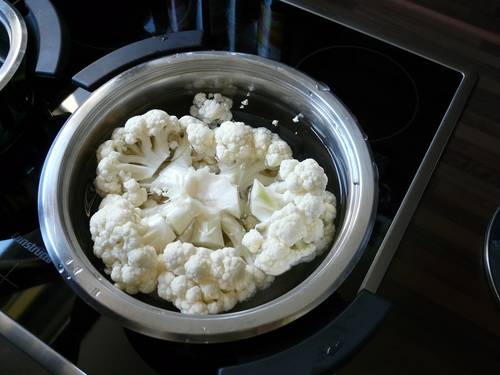
Mashed potatoes, casserole, soup, cauliflower soufflé - all these are incredibly healthy and tasty dishes from children's cuisine. The product is hypoallergenic, so it can be introduced into the diet from 6 months. Pediatricians include vegetables in the list of permitted first foods.
Standards for complementary feeding purees
The first feeding of cauliflower puree begins at 6 months. In the morning, the baby is offered half -1 teaspoon. If there is no reaction, the dosage is increased daily. In a month you should bring it to 50 g.
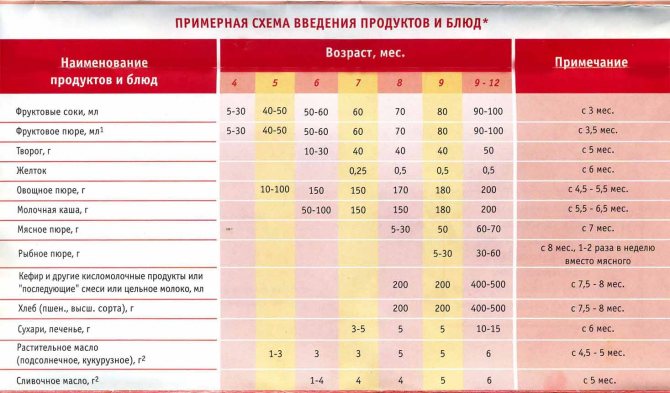
Scheme for introducing complementary foods by month
How often to give
In the first month, puree should be given only once a day, in the morning. The amount should gradually reach 50, and later – 100 grams. Cauliflower is perfect as a side dish for meat dishes. Or you can use it as a separate independent dish.
What can be combined with
There are a lot of combinations with vegetables. Most often, infants choose a dish in combination with:
- Carrot puree;
- Broccoli puree.
You can also add cabbage to the soup and then grind it to a puree.
Possible problems
Cauliflower rarely causes any reactions, but babies may experience the following problems:
- constipation;
- diarrhea;
- bloating and increased gas formation;
- food allergies, red rash.

Allergies manifest as rash, itching and peeling of the skin
Problems with the gastrointestinal tract occur due to the fact that the intestines are not yet mature to digest this vegetable. Constipation occurs if the product was introduced too early, or the baby ate too much of it. Diarrhea is the body's response to the introduction of a new product. As a rule, after 2-3 days the stool returns to normal. If a reaction occurs, the vegetable is removed from the children's diet for 1-2 months.
Signs of allergies
An allergic reaction to cauliflower occurs for the following reasons:
- the vegetable was introduced into complementary foods early;
- the reaction is caused by a hereditary predisposition;
- intestinal microflora is disturbed;
- the baby's immunity is reduced;
- the vegetable was treated with chemical elements, which, in turn, caused a reaction in the baby.
Allergies manifest themselves as:
- skin rashes;
- cough and runny nose;
- tearfulness of the eyes.
Cauliflower is a very healthy product. It is low in calories, hypoallergenic, and rich in vitamins and microelements. Its introduction into the baby’s diet should be gradual, in small quantities. If you follow all the rules, the baby will not have any reactions, and your health and body will become stronger and stronger.
Useful properties of the “curly” vegetable
Cauliflower is an ideal product for baby's first complementary foods. She is rich:
- protein
- dietary fiber
- vitamins – A, E, D, C, K, PP, U and group B
- minerals – sodium, potassium, phosphorus, iron, calcium
- acids - citric, tartronic, malic, folic, Omega-3 and so on
Why should this vegetable be given to children under one year of age? It is easily digestible and does not lead to increased gas formation; it rarely causes allergies. Additionally, cauliflower:
- promotes the development of healthy microflora in the intestines and restoration of the mucous membrane
- improves peristalsis and activates the elimination of toxins
- has a beneficial effect on the condition of blood vessels and heart muscle
- helps in the development of the baby's nervous system
- serves as a prevention of iron deficiency anemia
- has anti-cancer and anti-inflammatory properties
